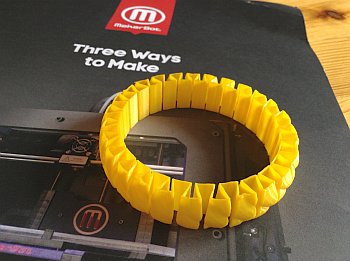The topic / task of the second week was „Knowing your students“ and „Creating Engaging Activities for them“.
I’ve made a tutorial for a combination of two Moodle activities: choice and forum. The choice activity would be for group selection, the forum activity for discussion on topics provided by the teacher. (I don’t like the technical group functionality of Moodle, because it often confuses teachers and I had cases when wiki content was gone after teachers had played around with the group settings.)
The combination suits many needs, is easy to create as a teacher and easy to use as a student. I’m very interested in basic solutions because I’m often in a situation where I have to convince teachers that using Moodle makes sense and that it works without problems.
Moodle MOOC: Session with Dave Cormier
That was fast – we are already in week 2 and I still have many things on my to-do-list for week 1.
I really enjoyed today’s live session with Dave Cormier. Starting with his well-known YouTube video „What is a MOOC“ we got into an experiment real soon: About 100 WizIQ web conferencing participants got editing rights on the whiteboard at the same time. I’ve never seen anything like this before. (When I give my AdobeConnect – which is another web conferencing system – courses for teachers and show the whiteboard, there aren’t so many participants by far and I start with simple szenarios.) It was a real impressive demonstration of some key aspects of Dave Cormier’s talk: uncertainty and responsibility. The need to structure a classroom where you can depend on the responsibility of all. Moodle structures things, it provides order but structures are also boundaries.
While Dave Cormier was talking there was extensive use of the whiteboard and not many things had to do something with the talk. At the beginning, when he asked about our thoughts of uncertainty, the responses on the whiteboard still made sense, but that was that (at this time, only some had editing rights). Afterwards, many of us were simply enjoying using the whiteboard and some could not be stopped. I’ll list some of the thoughts that went around in the meeting room about the reasons:
- „They didn’t know that they changed the whiteboard for all others, and that everyone saw what they were writing.“ (That’s a very valid point, because most often learning environment are structured in a way that students can’t change anything or at least can’t disturb anything.)
- „They didn’t hear, that they were asked to stop their actions.“ (Also a very valid point because audio in web conferencing systems often is a problem.)
- „They were happy to use a new tool which they didn’t know yet.“ (A valid point because in my experience it’s natural that many people try to click on everything and drag and draw. And it was actually the first time we were given rights to edit the whiteboard in the Moodle MOOC.)
- „They didn’t understand because of language problems.“ (Indeed, we are an international group from many places of the world.)
- „They didn’t see the text chat messages, where many participants asked the whiteboard users to stop.“ (Yes, that could also be a reason, because there really was much activity in the chat window.)
For me, the session wasn’t just a lesson in MOOC activities with great teachers, but also a reminder for aspects a web conference tutor should be prepared for (or if he/she doesn’t like it, should simply avoid by granting the editing rights differently). As I wrote in the text chat „This is a session we will remember“. It would be interesting to do this again with the same participants – I think it would be different.
Moodle MOOC: Course Layout
Our main topic this week is the Moodle Course Layout and there is much discussion and activity in the different forums.
I misunderstood the task for week 1 a little bit and because I had already started with putting things together, I continued. The result is a pdf file which is not interactive or multimedia-based but could be helpful especially for beginners as it covers many aspects (sort of an overview).
Click here: Moodle 2.5 Course Layout (Tips, Questions and Answers)
[Update 9.6.2013]
And here is the multi-media based version with the function of an audio commentary on YouTube:
As I wrote down, what I planned to say, I’ll also upload the transcript.
Moodle MOOC on WizIQ – First impressions
I am very happy with my decision to join the „Moodle MOOC on WizIQ„. MOOCs are a topic which you just can’t keep away from when working in the e-learning sector – it’s everywhere. Therefore, it is a good thing to participate in different kinds of MOOCs in order to get first-hand impressions. A Moodle MOOC is a good occasion for me because I am responsible for supporting academic staff at Heidelberg University in the use of educational technologies (which means mostly Moodle).
Traditionally, the first week in a MOOC is for orientation and thinking about what to achieve. In the Moodle MOOC we have different kinds of platforms (among them two Moodle installations: one for discussions and assignments, another one for Moodle practice). I was surprised at the number of introduction posts to write and profiles to edit (I think, I got them all), but it sure is an important thing.
The MOOC opening cermenony on May 31st was quite impressive and a great example how to create an inspiring atmosphere and help the participants really enjoy being online. The input from Martin Dougiamas was very interesting for me because of getting insights in Moodle 2.5 and the priorities of the further Moodle development. I also liked the course session on Saturday where we got instructions for the course and the course environment. Nevertheless, a session scheduled the third day in a row was too much for me, so I skipped the session on Sunday and watched the recording afterwards. Sunday was the first sunny day in weeks and a walk by the nearby river Rhine and its rising floodwaters got my attention instead.
I think the challenges in this MOOC (in addition to the usual ones like keeping up the motivation, trying to activate the participants and offering technical support for a large number of participants) could be the very different experience levels of the participants and the many countries (and time zones) involved. When I read about the course, I wasn’t sure, which kind of experience level would be addressed (for Moodle beginners?) and I think, it was a very good idea from the facilitators to offer different Moodle courses for different experience levels. It was a little bit confusing at first to get to the correct Google document in order to choose the course – there was so much information about the platforms and Moodle courses. I like the concept up to now and the course concept (e.g. how to offer a MOOC with the topic „Moodle“) is one of the things which got me interested in this course. And which also lets me think about the course out of the facilitator perspective although I am a participant. The technical and organizational support is great (a big thank you to Nellie Deutsch) and I look forward to the next days and weeks in „Moodle MOOC on WizIQ“.
3D-Printing: Bookmark-Auswahl

Ein Thema, über das derzeit viel geschrieben wird und das ich sehr interessant finde, sind 3D-Drucker. Da dominiert zwar noch der technische Aspekt, aber wie im Horizon Report Higher Education 2013 beschrieben, sind durchaus auch Anwendungen für den Bereich „Education“ denkbar und bereits im Einsatz. Ein wieder mal regnerisches Wochenende war eine gute Gelegenheit, meine lokal gesammelten Bookmarks in Delicious und Diigo unterzubringen.
Bei meinem New-York-Urlaub im März diesen Jahres nutzte ich die Gelegenheit zu einem Kurzbesuch im MakerBot-Store in der Mulberry Street. Dort konnte man sich die Replicator2-Modelle live anschauen und sich Gegenstände ausdrucken lassen, so z.B. ein dehnbares Kunststoff-Armband, das schichtweise innerhalb von 20 Minuten erzeugt wurde (s. Foto).
Das Konzept des Ladens sieht neben dem Verkauf und Demo von Geräten auch diverse Events, Schulungen etc. vor – sicherlich eine gute Idee.
Die Stadtbibliothek Köln, die seit kurzem einen Replicator2 vor Ort anbietet, wechselt auch zwischen Vorführungen und der Möglichkeit, mitgebrachte Vorlagen gegen Gebühr auszudrucken (s.a. BuB 65 (2013) 05, S. 336).
Hier meine kleine Auswahl von 3D-Printing-Bookmarks:
delicious.com/idethloff/3D-Printing
www.diigo.com/user/idethloff/3D-Printing
(Bei Diigo sind die eigentlichen Bookmarks leider massiv mit Werbung durchsetzt.)
Anbei ein 3D-Printing-Bookmarks-Screenshot von heute mit 20 Bookmarks.
